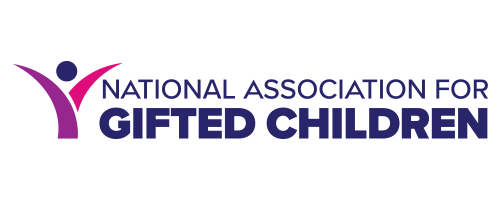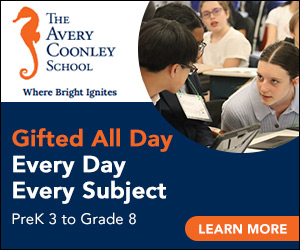Queering the Curriculum: Addressing Intersectionality in Gifted Education
Gifted students are often viewed through a narrow academic lens, but, as our readers know, the reality is far more complex. Intersectionality in gifted education acknowledges that students' identities are multifaceted, shaped by race, gender, socioeconomic background, disability, culture, and sexual orientation. These intersecting identities not only influence how students are identified for gifted programs but also how they experience them. Historically, gifted education has favored certain populations while marginalizing others, leading to disparities in representation and support. Today, we are working to correct this historical bias.
LGBTQ+ students, in particular, face layered challenges. For those who are also gifted, these challenges are compounded. Research shows that gifted LGBTQ+ youth often experience higher rates of anxiety, depression, and isolation due to feeling "different" from both their academic peers and broader school communities (Wexelbaum & Hoover, 2014; Friedrichs et al., 2018). Heteronormative educational settings lacking affirming policies and protections only deepen this marginalization, contributing to increased risks of academic disengagement and even suicidality (Snapp et al., 2015; Colvin et al., 2019).
Despite these realities, research on the intersection of giftedness and LGBTQ+ identity remains scarce. Studies like Wikoff et al. (2021) have shed light on the urgent need to center these experiences, finding that many gifted LGBTQ+ individuals endured significant emotional and psychological struggles during adolescence.
This is why queering the curriculum in gifted classrooms matters. To queer the curriculum is to “[interrogate] boundaries of normality” in schools (Pennell, 2017, p. 64). It goes beyond inclusion—it’s about transformation. For our gifted students, who have spent most of their lives not fitting into the boxes schools and society make for them, acknowledging their LGBTQ+ identities can be liberating.
How to do this? Some small ways to start queering the curriculum include attending carefully to our language and refusing to erase queer identities in history. Many of us grew up with teachers addressing the class as “boys and girls,” but for kids who don’t fit easily into these boxes, it can make a difference when the teacher calls the group “folks,” “scholars,” or another, less-gendered name. In Spanish classes, it could be acknowledging movements to include the gender-neutral pronouns elle and elles. In English and history classes, queering the curriculum can begin with acknowledging gender and sexuality when considering eminent figures in history; while Alan Turing, Langston Hughes, and Sally Ride are certainly models of gifted people who have changed the world, they are also queer people who have changed the world. By allowing students to hear their identities expressed in the language we use and to see similar identities in the content they learn, school can become a place for them to holistically thrive.
To queer the curriculum is to offer greater amounts of choice and autonomy to students, to broaden the boundaries of what may be considered “correct” and to loosen the reins on parts of the classroom that traditionally remained in the hands of adults only. This can be modeled by setting clear expectations of respectful behavior and language and by interrupting and challenging derogatory and heteronormative language. Another way to build in choice and autonomy is to involve all the students in creating a safe classroom. For Spanish teachers, for example, this opens the door to students using a gender-neutral pronoun, loosening the grip on tradition and allowing students to change the shape of the curriculum.
For gifted students, though, this freedom can be the breathing room they’ve always needed. For gifted, LGBTQ+ students, this freedom can be life-saving.
When educators intentionally challenge normative assumptions, incorporate diverse voices, and foster affirming environments, they disrupt systems that marginalize and instead cultivate spaces where all students can thrive. For gifted LGBTQ+ youth, this can mean the difference between silence and self-expression, isolation and belonging. It's time gifted education reflects the full spectrum of brilliance our students bring.
References:
Friedrichs, T.P., Manzella, T.R., Seney, R., & Adams, C. M. (2018). Needs and approaches for educators and parents of gifted gay, lesbian, bisexual,
and transgender students. National Association for Gifted Children.
Pennell, Summer Melody. “Training Secondary Teachers to Support LGBTQ+ Students: Practical Applications from Theory and Research.” The
High School Journal 101, no. 1 (2017): 62–72. https://doi.org/10.1353/hsj.2017.0016.
Snapp, S. D., McGuire, J. K., Sinclair, K. O., Gabrion, K., & Russell, S. T. (2015). LGBTQ-inclusive curricula: Why supportive curricula matter. Sex
Education, 15(6), 580–596. https://doi-org.proxy.library.umkc.edu/10.1080/14681811.2015.1042573
Wexelbaum, R., & Hoover, J. (2014). Gifted and LGBTIQ: A comprehensive research review. International Journal for Talent Development and
Creativity, 2(1), 73-86.
Wikoff, H. D., Lane, E. M. D., & Beck, M. J. (2021). "We need to feel safe": Experiences of gifted LGBTQ+ students and implications for school
counselors. Journal of LGBTQ Issues in Counseling, 15(3), 268–289. https://doi.org/10.1080/15538605.2021.1914277


